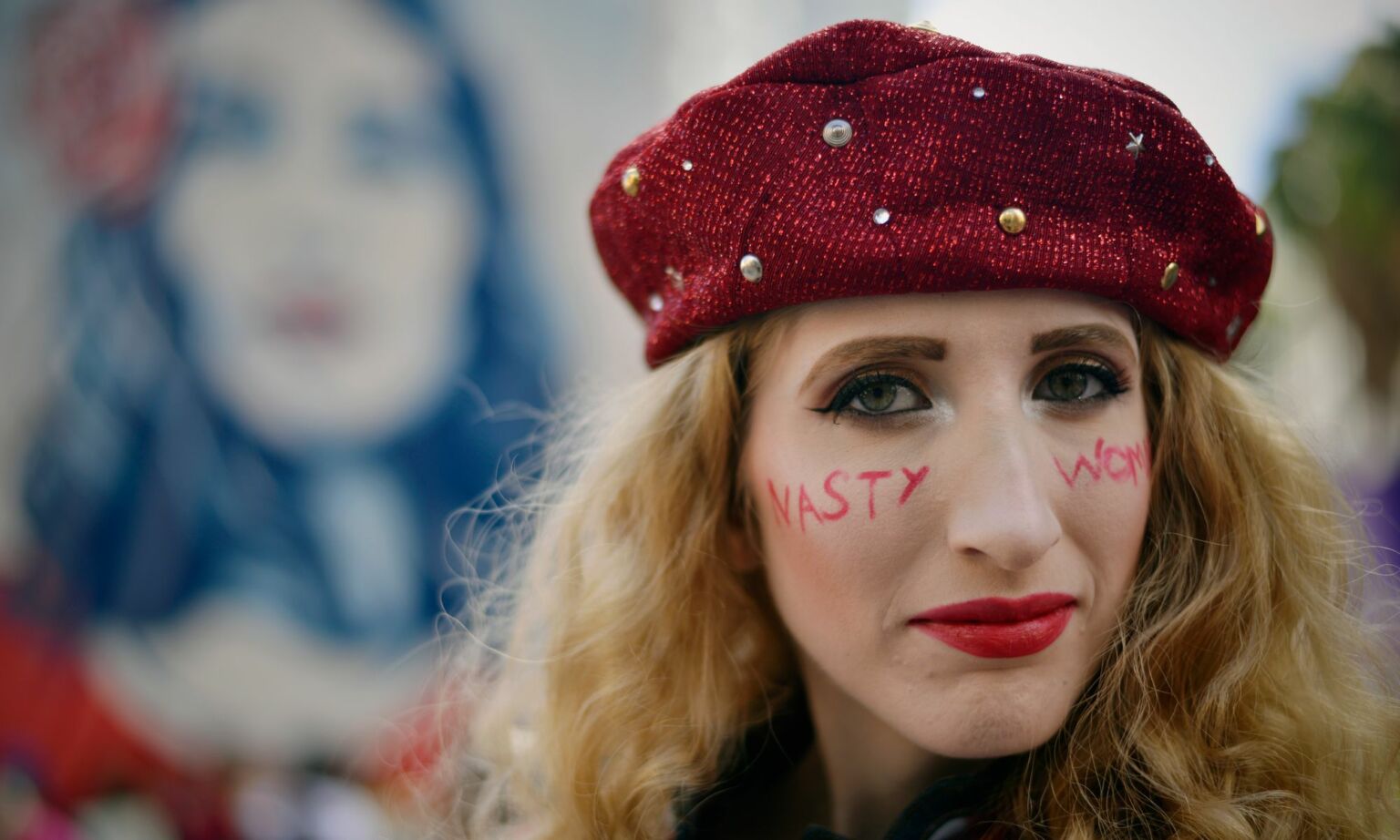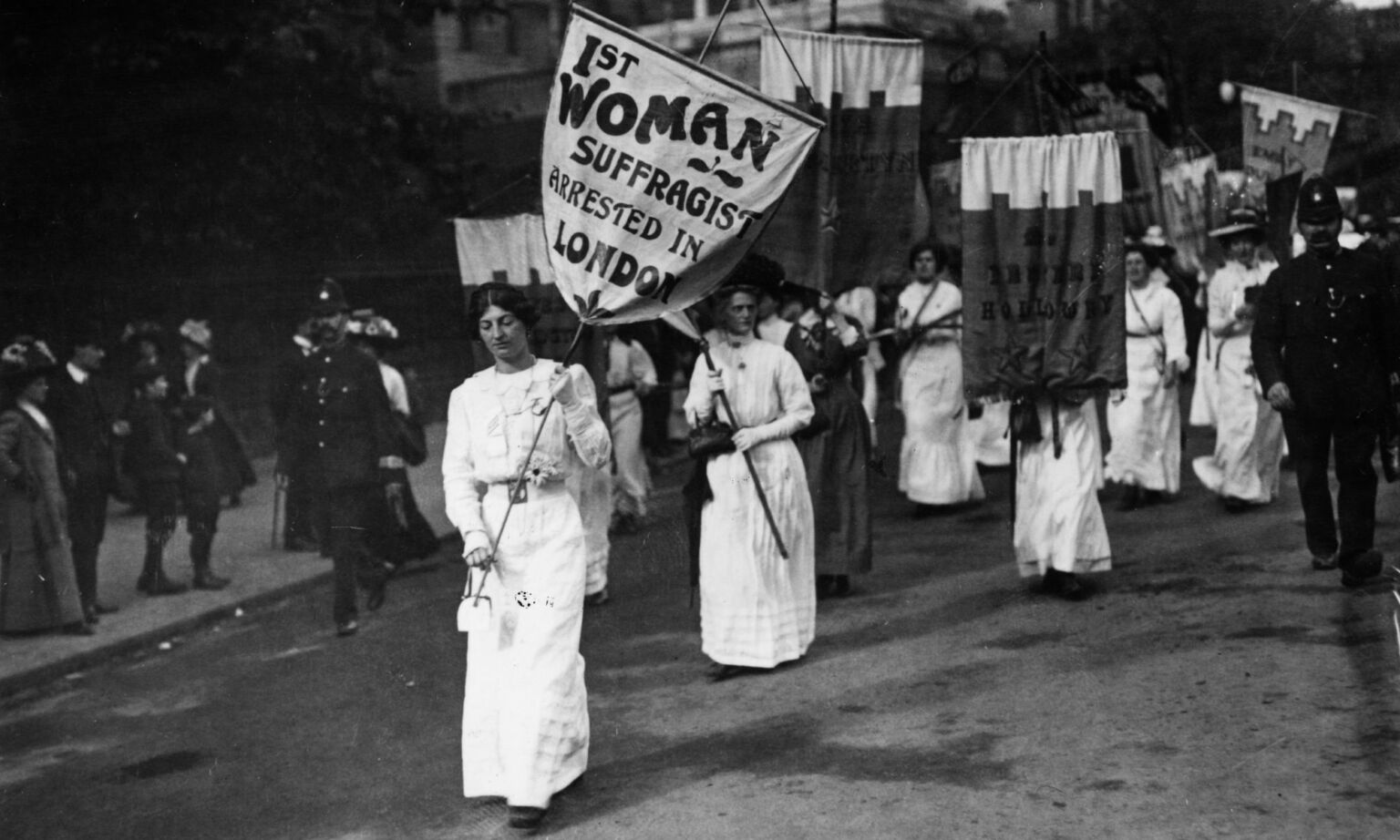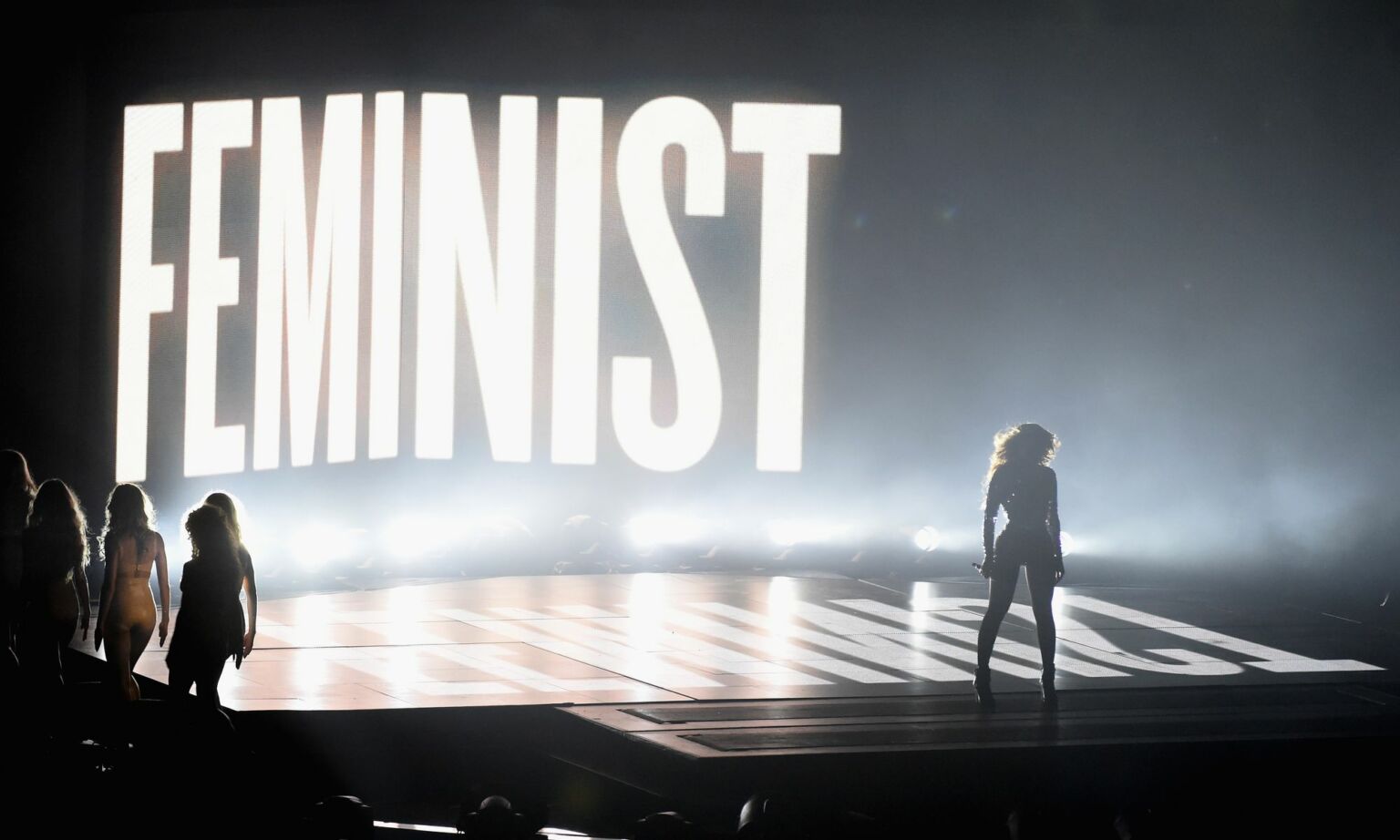
Long-read
Feminism has a woman problem
Why so many younger feminists have fallen for the delusions of gender ideology.
As the gender-identity wars reached fever-pitch, Rosie Duffield, Labour MP for Canterbury, accused her party of having ‘a woman problem’. Ever since Duffield first tentatively raised her head above the parapet to suggest that the common noun for ‘individuals with a cervix’ is, in fact, ‘women’, she has been subjected to outright hostility and ostracism. The lack of support for her from the parliamentary Labour Party is deafening. For Labour, the question of ‘what is a woman?’ is ‘always a sensitive issue’. According to Keir Starmer, the statement that only women have a cervix is ‘something that shouldn’t be said’.
It’s not only the Labour Party that has tied itself up in knots on the gender question. Theresa May, the former Conservative prime minister, arguably started it back in 2017, when she declared her plans to reform the Gender Recognition Act, by ‘streamlining and demedicalising the process for changing gender’. Other Tories have been equally keen to jump on the ‘right side of history’ bandwagon, betraying their ignorance of the issues at stake.
Amid all this gauche, progressive posturing, it seems that feminism might be finding itself again – in the unlikely form of the ‘TERF’. TERF (trans exclusionary radical feminist) began as a pejorative label, but has turned into a category that, in our current state of hyperreality, has come to seem more recognisable than ‘woman’. The TERF is the ageing child of the women’s liberation movement – a stroppy straight-talker who refuses to have her knowledge and experience dismissed by those who insist it is bigoted to question gender ideology.
Though ideologues have made a concerted attempt to marginalise TERFs, it seems that they represent what most people think. As Dr Jane Clare Jones put it, in the much-cancelled documentary Adult Human Female:
‘[Trans ideologues] have made a very large miscalculation, because they mistook actual women for their projections. And they misunderstood that women are actually generally quite accommodating, until you really, really take the piss, and we put a line down and then – we will not fucking move.’
For those of us who have long found ourselves bewildered by, and estranged from, the thing that calls itself ‘feminism’, the sudden emergence of the shouty, sweary ‘TERF’ is the gift that keeps on giving. Every time some worthy voice patronises, in the pseudo-intellectual tone of one who knows best about something really complicated, the TERF camp fires off a missile telling it like it is.
The idea that men can become women and women can become men, just because they say so, makes no sense outside of virtual reality. It cannot speak to centuries of history made up of ‘birth and copulation and death’, in which men and women have struggled to reproduce their societies through reproducing themselves, slowly constructing new realities within the limitations of nature and culture, gradually trying to push forwards to a better state of being.
That slow, painful progress brought women political and legal equality, some control over their fertility, and the ability to be defined less by their bodies than by their actions. It did not give women the freedom to be ‘whoever we wanted to be’. It just gave us more control over being able to do what we wanted to do. It gave us the ability to be ourselves – not men with breasts, but women with rights.

So why have the cultural elites of Western societies suddenly decided that the future will be best served, not by the consolidation of sexual equality, but the eradication of difference between the sexes? It’s an enormous question with answers well outside of the scope of this article – but at least part of the explanation for our current cultural confusion lies in the contradictions of feminism itself.
Women’s liberation in the 20th century
As I discussed in an earlier essay, for all the gains made by feminism in identifying and fighting against women’s inequality, it has always floundered in providing a satisfactory answer to ‘the woman question’. The tendency to view complex economic, social, historical and existential questions through the prism of male power and privilege has led to numerous splits, tensions and blind alleys, as feminists struggled to identify what, precisely, was keeping women down.
Was it the barrier to engaging in ‘meaningful’, paid work – as Betty Friedan proposed – or society’s failure to value mothering and caregiving equally with a career? Was it the inability to engage in sex without fear of pregnancy and social sanction, or the inability to escape sexualisation via the ‘male gaze’? Did women need the freedom to engage in social life and the kind of risky behaviour men take for granted, or did we need protection from the dangers posed by these activities and the men who practise them?
These debates, among countless others, have raged for a century. They are unlikely ever to be resolved, for the simple reason that women do not all experience or desire one thing. For every girl who rails against the tyranny of Instagram ‘perfection’, there will be another who primps and pouts her way into the Plastics. For every new mother who struggles to come to terms with swapping suits and business meetings for coffee mornings and nappy-chat, there will be another who wishes she could afford to stay at home with the kids and create a domestic idyll for her family.
All these different women will have different experiences of men – the nice guys, the sexist pigs, the dependable life partners, the violent abusers. People, like life, are messy and complicated. It takes all sorts to make a world.
That is why over the course of the 20th century, however, the driving force behind women’s liberation was the demand for greater equality and democracy overall: a concern that women should be treated as full citizens, not as second class. People didn’t want to abolish the distinction between men and women, but to remove the restrictions on women’s ability to live a full life.
The historic gains made for women’s equality have happened by acknowledging the messiness of life, and the limitations of a focus on experience, in favour of demands for autonomy and choice. The Suffragette movement contained a great deal of snobbery and some prissy ideas about sex, but when women won the right to vote, they did not have to sign up to these views – they just gained the ability to exercise their own choice in the political domain.
Elements of the birth-control movement in the early 20th century had some decidedly dodgy ideas about who should (and shouldn’t) have babies. But the invention of the pill and the legalisation of abortion did not require women to control their fertility – it gave them the ability to do this. Equal-pay legislation did not demand that women went to work or that they did the same work as men. It meant that they should be paid the same for the same job.
In all these great gains, feminism played a hugely significant role. The tendency of the 20th-century left was to focus on overthrowing the capitalist system in order to bring about a new, equal society. A laudable goal, but one that contained a strong element of ‘calm down, dear’ when it came to questions of sexual equality. The right, meanwhile, offered a rose-tinted vision of the family as a harmonious haven, in which everyone knew their place. It often refused to engage with the mounting evidence of injustice and inequality.
Twentieth-century feminists refused to be bought off with promises of a future utopia. And they refused to give in to nostalgic delusions. Instead, they demanded equal rights now. Like the TERFs currently digging in on the question of gender identity, these activists stood their ground and told it like it was.
Cultural feminism and the ‘fourth wave’
Yet during the 21st century and especially over the past decade or so, the cause that brands itself feminism has become muddled. Even as men sported t-shirts proclaiming ‘This is what a feminist looks like’ and Beyoncé bellowed that girls run the world, feminists bemoaned the evils of toxic masculinity and a culture of ‘everyday sexism’. Lawmakers created new crimes against women, such as ‘upskirting’. Boys were variously castigated for their privilege or chivvied to ‘consent’ classes, while, in their own time, they engaged enthusiastically in online porn.
The ‘sexual liberation’ of the Sixties also came under renewed attack from both sides – as a cover for male licence to take advantage (#MeToo), and female licence to binge-drink and act aggressively (the Daily Mail, et al). Nobody could work out whether having babies represented the new ‘right to choose’ or a slippery slope into domestic drudgery.
‘What a feminist looks like’ turned out to be somebody who said, thought, and did the right things – even when it was unclear what the ‘right things’ were. Holding a door open could be patronising or respectful; hugging could be emotionally intelligent or unwanted touching. The domain of interpersonal relations became a minefield, dominated by subjective interpretation and wrought with hyper-sensitivity. Sex was presented as the stuff of either fantasies or nightmares, rarely as the joyous union of bodies.
In the domain of politics, the democratic focus of previous equality demands went decidedly out of favour. In the progressive camp, intersectional feminists attacked second-wavers’ emphasis on choice and autonomy as a white middle-clash shibboleth, which failed to address constraints caused by other forms of discrimination and inequality. In the traditionalist camp, a new branch of ‘conservative feminism’ reincarnated the spirit of the stalwart US anti-feminist Phyllis Schlafly, attacking reproductive choice and liberalised social attitudes for distracting women from their true desire to marry and have kids.
From all sides, it seemed, women’s freedom was under fire from a 21st-century kind of paternalism, which sought to protect us from our socially conditioned choices and behaviours – which, apparently, only benefited men.
The problem with women
Detached from its relationship with clear political, democratic objectives, cultural feminism turned into a caricature of itself: jumping at shadows from the past, and losing itself in the symbolic universe of language, imagery and performative gestures. As formal sexual equality became established, the search for a cause of women’s dissatisfaction came to focus on sexual difference.
Everything from the work men did around the house (not enough!) to the amount of room they took up on public transport (too much!) was framed as proof that patriarchy retained its insidious grip. From the perspective of fourth-wave feminism, the problem wasn’t only men – to the extent that they enabled these differences to persist, the problem was women as well.

The sisterhood has always had a tendency to behave like actual sisters – closely supportive one moment, divisive and rivalrous the next. When grievance and dissatisfaction came to be understood through the prism of gendered behaviour, women who accepted – even enjoyed – some of this behaviour were implicitly branded as complicit. Women who didn’t see flirting as on a continuum with sexual violence, or dressing little girls in pink as grooming them for a lifetime of subservience, or looking after babies as a cop-out from living a meaningful life, were regarded as both victims and perpetrators of the gendered assumptions that had held us back all these years. They needed to stop simply accepting their existence as women, and start questioning it instead.
According to this logic, a plausible answer to the ‘woman question’ appears in the form of transgenderism: offering the opportunity to opt out of all that problematic historical socialisation and construct your own box. The insight that gender roles are socially constructed – that what pushes women towards caring roles, for example, is not the natural fact of their sex, but the social assumption that this is what they are good at – morphed into the idea that gender itself is socially constructed.
That is also true, to the extent that how men and women dress and behave is strongly conditioned by social and cultural norms. We saw this in the past, when dads didn’t change nappies and women were frowned on for drinking in bars alone. We see it now, via the hypersexualised images of women and men that dominate social media, which surely contribute to a sense of gender insecurity among those young people who can’t be like that, or don’t want to be like that.
But it is true only up to a point. And that point is where we are now.
You can acknowledge, as I do, that reality is socially constructed and that culture plays a powerful role in shaping our existence. There is very little about living in Britain in 2023 that can be said to be ‘natural’, which is why we live so much longer than we used to and are more likely to work in offices than in the fields. But some things are enduring features of our material existence, and the historical web of meaning that has shaped our culture for generations.
Biological sex, sex differences and binary categories of man and woman are foundational concepts that cannot simply be re-imagined to provide a clever explanation for existential angst. In promoting the idea that ‘trans’ is a progressive lifestyle choice that can be easily adopted, and that anybody who questions this mantra is a ‘transphobe’, gender ideologues are peddling a dangerous fantasy.
So we should thank the old-fashioned feminists for reminding us that at the heart of the struggle for women’s liberation were actual, ‘material girls’ – not mere ciphers for other aspirations. In doing so, they also remind us that, caught up in the culture wars over gender, are actual trans people – often troubled young women and men who have been forced under an unforgiving spotlight by the politicisation of identity.
One terrible consequence of the ‘trans inclusion’ juggernaut is that it imagines trans people as categories who should be performatively lauded or criticised, depending on one’s stance on gender ideology. It puts a target on their backs. It’s a funny kind of ‘solidarity’ that hides behind an unhappy teenager to win a cultural conflict.
Today’s older feminists now striking out in the name of reality may not get everything right. But they’re not hiding behind anyone. Their commitment to telling it like it is provides a lesson for us all.
Jennie Bristow is senior lecturer in sociology at Canterbury Christ Church University and is on the editorial board of Collateral Global.
Pictures by: Getty.
To enquire about republishing spiked’s content, a right to reply or to request a correction, please contact the managing editor, Viv Regan.






Comments
Want to join the conversation?
Only spiked supporters and patrons, who donate regularly to us, can comment on our articles.